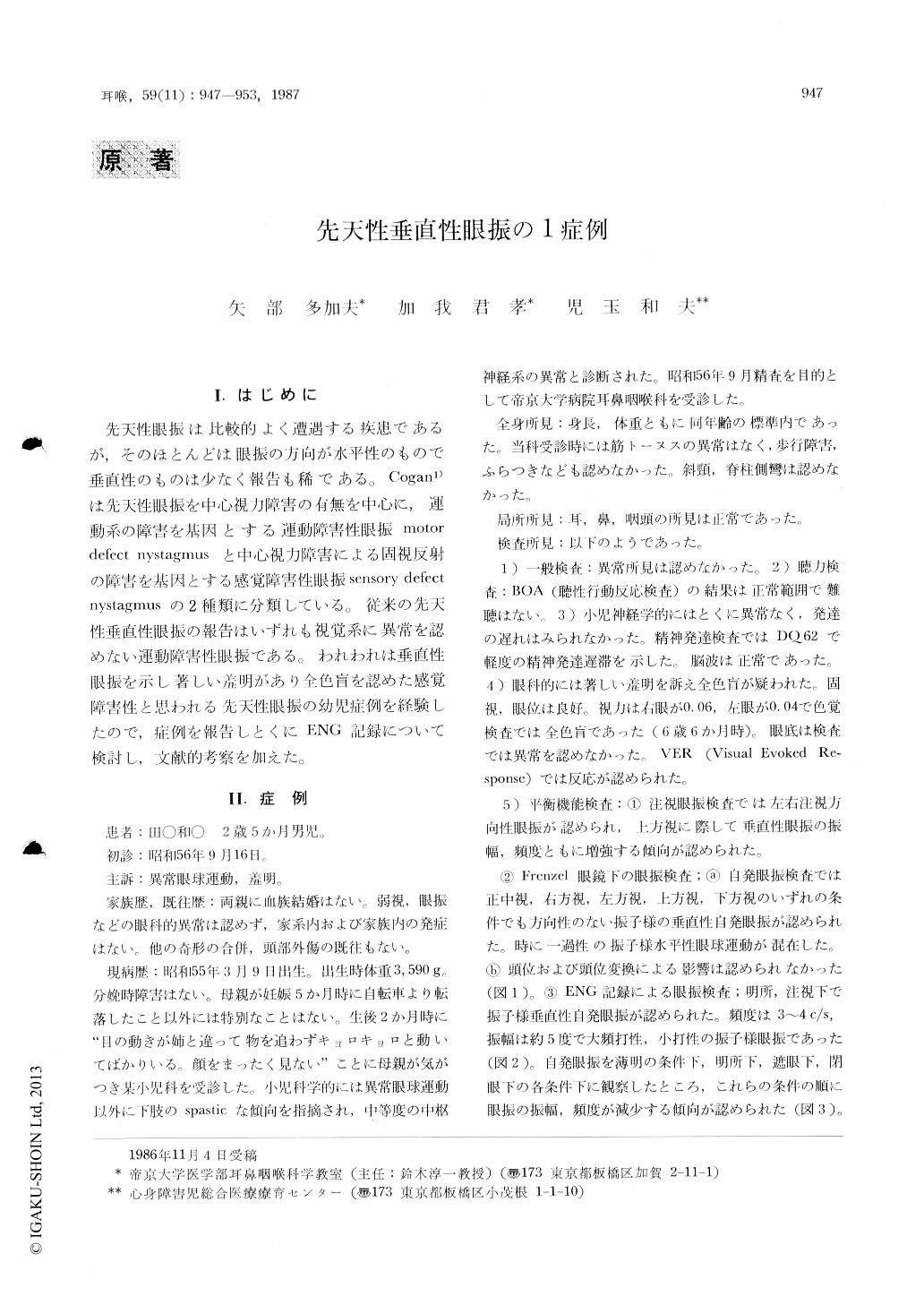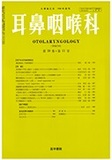Japanese
English
- 有料閲覧
- Abstract 文献概要
- 1ページ目 Look Inside
I.はじめに
先天性眼振は比較的よく遭遇する疾患であるが,そのほとんどは眼振の方向が水平性のもので垂直性のものは少なく報告も稀である。Cogan1)は先天性眼振を中心視力障害の有無を中心に,運動系の障害を基因とする運動障害性眼振motordefect nystagmusと中心視力障害による固視反射の障警を基因とする感覚障害性眼振sensory defectnystagmusの2種類に分類している。従来の先天性垂直性眼振の報告はいずれも視覚系に異常を認めない運動障害性眼振である。われわれは垂直性眼振を示し著しい羞明があり全色盲を認めた感覚障害性と思われる先天性眼振の幼児症例を経験したので,症例を報告しとくにENG記録について検討し,文献的考察を加えた。
Congenital nystagmus is not rare. But most cases are of the horizontal type, the vertical type being observed in only a very few instances.
A 29-month-old boy with abnormal eye movements and marked photophobia showed pendular vertical nystagmus, and the nystagmus increased in amplitude and frequency by fixation and on upward gaze. The optokinetic nystagmus test showed partial inversion upon horizontal optokinetic stimulation, Vestibulo-ocular responses were normal. There was no hereditary of neurological findings, but he had total color blindness and subnormal vision.
We concluded that this patient had congenital sensory defect with vertical nystagmus due to total color blindness. His pendular vertical nystagmus was gradually changing to horizontal nystagmus in a lapse of time.

Copyright © 1987, Igaku-Shoin Ltd. All rights reserved.


